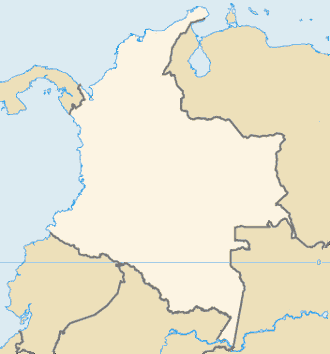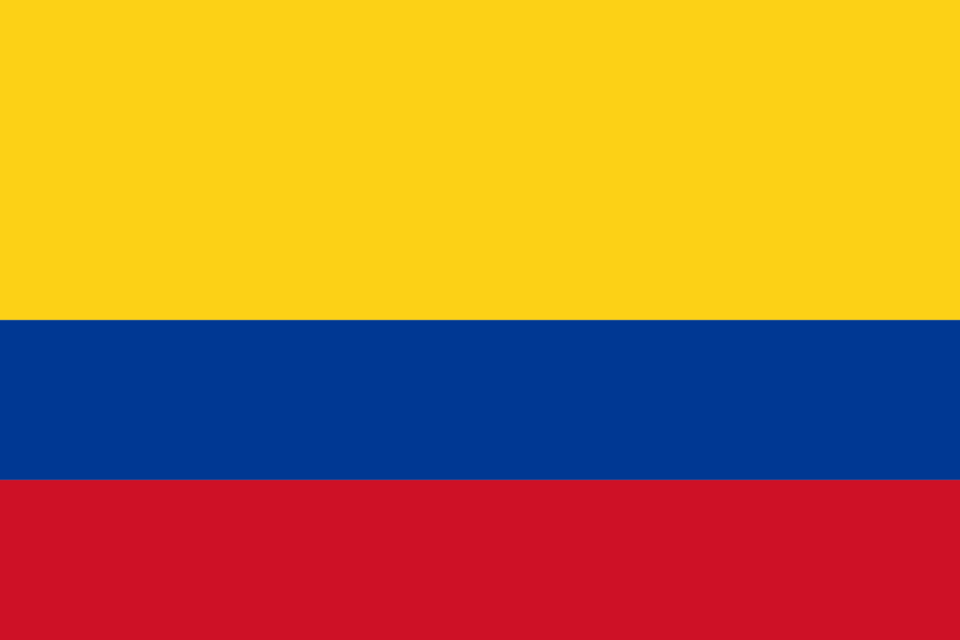Colombia Military Power Ranking 2025
MPR Rank: 33rd
MPR SCORE: 794
MPR Index: 0.3429 (1.0000 is perfect)
Reverse MPR Index: 0.6228 (0.0000 is perfect)
Z Score: +0.907 (standard deviations above the mean)
Overview
Colombia ranks 33rd in the 2025 Military Power Rankings (MPR). With one of Latin America’s largest and most operationally active armed forces, Colombia’s military is structured primarily around internal security, counterinsurgency, and anti-narcotics operations. After decades of armed conflict with guerrilla and paramilitary groups, Colombia has developed a combat-hardened, mobile, and intelligence-driven military apparatus. Though it lacks the heavy firepower and strategic reach of global powers, Colombia is one of the most experienced countries in the world in asymmetric warfare and jungle operations.
Strengths:
Combat Experience and Internal Operational Mastery
Colombia’s military derives its strength from its real-world battlefield experience and institutional adaptation to persistent internal threats:
Decades of Combat Exposure: Colombia’s Army, Navy, and Air Force have been engaged in continuous operations for over half a century against insurgent groups like the FARC, ELN, and organized criminal networks. This has created a force that is logistically agile, combat-tested, and trained for long-term low-intensity warfare.
High-Quality Special Operations: Colombian special forces units are among the most skilled in Latin America, specializing in jungle warfare, reconnaissance, and hostage rescue, often trained with U.S. and NATO partners.
Air Mobility and Surveillance Focus: The Colombian Air Force emphasizes rotary-wing transport, ISR platforms, and light strike capability, optimized for rapid deployment in mountainous and forested terrain.
Regional Security Anchor: Colombia plays a central role in regional stability and has exported counterinsurgency expertise to neighboring countries and allies, acting as a security partner in the Western Hemisphere.
Why Colombia Is Ranked 33rd
Despite its elite experience and large internal footprint, Colombia’s military faces major limitations in conventional warfighting and strategic depth.
1. No Strategic or Conventional Warfighting Capability
Colombia’s military is optimized for internal threats:
It lacks heavy armored divisions, modern fighter jets, and long-range strike capabilities
It has no nuclear program, missile deterrent, or significant blue-water naval power
It would be unable to engage a peer or regional adversary in a high-intensity, large-scale conflict
2. Force Fragmentation and Political Strain
Decades of internal warfare have:
Overextended Colombia’s military across fragmented fronts
Required overlapping roles with police and intelligence agencies
Created dependency on foreign aid, training, and U.S.-provided surveillance platforms
This constrains the military’s autonomy and slows efforts to transition toward a fully conventional doctrine.
3. Limited Industrial and Technological Base
Colombia:
Relies heavily on foreign suppliers for aircraft, munitions, and advanced communications
Possesses no significant defense manufacturing infrastructure
Faces budgetary constraints that limit force modernization, despite growing operational needs
Conclusion
Colombia’s military is one of the most battle-tested forces in the Western Hemisphere, capable of sustained multi-theater internal operations. Its strength lies in counterinsurgency, jungle mobility, and intelligence-driven tactics, not in conventional battlefield dominance or strategic projection.
In the MPR system—where decisive warfighting capability, strategic autonomy, and technological parity are central—Colombia ranks 33rd due to its specialization in asymmetric warfare, lack of force projection, and enduring dependence on external support. It remains a regional stabilizer, but not a conventional military power.
Military Strength and Force Projection
Active Military Personnel: 228,000 (IISS 2023)
Reserve Personnel: 80,000 (CIA World Factbook)
Paramilitary Forces: 70,000
Army Personnel: 190,000
Navy Personnel: 35,000
Air Force Personnel: 25,000
Ground Forces
Main Battle Tanks (MBTs): 0
Armored Fighting Vehicles (AFVs): 800+
Artillery (Towed and Self-Propelled): 350+
Air Force
Combat Aircraft: 45+ (SIPRI 2023)
Helicopters: 150+
Transport Aircraft: 40+
Aircraft Breakdown:
Kfir Fighter Jets: 18
A-37 Dragonfly Attack Aircraft: 15
UH-60 Black Hawk Helicopters: 45
Naval Forces
Submarines: 4 (Type 209)
Frigates: 4 (Almirante Padilla-class)
Corvettes: 6
Patrol Vessels: 50+
Amphibious Assault Ships: 3
Missile Capabilities
Colombia has no strategic missile systems but focuses on coastal defense, counter-narcotics, and counter-terrorism operations. It has acquired modern anti-aircraft and anti-tank systems to enhance its defensive capabilities.
Strategic Partnerships
Colombia has a strong defense partnership with the United States, participating in joint training exercises and counter-terrorism operations. It is also part of regional security alliances within Latin America, aimed at maintaining peace and combating organized crime.
Colombia – Military History & Combat Experience
Colombia’s military history is dominated by one of the world’s longest-running internal conflicts, giving its armed forces exceptional experience in counterinsurgency, urban operations, and civil-military engagement. While Colombia has not fought a conventional foreign war in modern times, it has developed world-class capabilities in irregular warfare and domestic threat suppression.
La Violencia (1948–1958): A period of intense political violence that laid the groundwork for later insurgencies. The military operated as an internal stabilizer amid widespread civil unrest and partisan conflict.
FARC and ELN Insurgency (1964–2016): The Colombian Armed Forces fought a full-scale internal war against left-wing guerrilla groups for over five decades. This conflict involved jungle warfare, intelligence-led strikes, and urban counterinsurgency, with support from U.S. programs such as Plan Colombia. Colombia’s military conducted large-scale joint operations, targeting insurgent leadership, dismantling infrastructure, and regaining territorial control.
Paramilitary Conflict and Narco-Warfare (1980s–2000s): The rise of paramilitary organizations and powerful drug cartels such as the Medellín and Cali cartels forced the military into urban warfare, convoy protection, and counter-cartel raids. These operations blurred the lines between military and police roles.
21st Century Professionalization and U.S. Partnership: Throughout the 2000s, Colombia’s military professionalized rapidly, expanding its special forces, air mobility, and joint operational capacity. It became a close security partner of the United States and began exporting military training to Central America and Africa.
Peace Agreement and Ongoing ELN Threat (2016–Present): While the FARC disarmed under the 2016 peace accord, the ELN and criminal successor groups continue low-intensity operations. The military now focuses on post-conflict stabilization, rural control, and continued anti-narcotics operations in difficult terrain.
Colombia’s combat experience is unmatched in Latin America in terms of duration, complexity, and adaptability. Its military has evolved from a fragmented internal force into a disciplined, hybrid-capable army, but remains rooted in counterinsurgency, not conventional power projection.
General Information
Demographics and Geography
Population: ~52.2 million (2024 est.)
Population Available for Military Service: ~21.6 million (males and females aged 18–49)
Geographic Area: 1,138,910 km²
Land Boundaries: 6,672 km
Bordering Countries: Brazil, Ecuador, Panama, Peru, Venezuela
Coastline: 3,208 km (Caribbean Sea and Pacific Ocean)
Climate: Tropical along coast and eastern lowlands; cooler in highlands
Terrain: Andes mountains, Amazon rainforest, Llanos plains, Caribbean and Pacific coastlines
Natural Resources: Petroleum, natural gas, coal, iron ore, nickel, gold, copper, emeralds, hydropower, arable land
Proven Oil Reserves: ~2 billion barrels
Proven Natural Gas Reserves: ~95 billion cubic meters
Economic Indicators
Defense Budget (2025): ~$12.3 billion USD
Defense Budget as % of GDP: ~3.4%
GDP (PPP): ~$1.25 trillion USD
GDP per Capita (PPP): ~$23,900
External Debt: ~$183 billion USD
Military Expenditure Trend (last 5 years): Stable but substantial; driven by internal security, counterinsurgency, and modernization
Military Infrastructure and Readiness
Military Service Obligation: Mandatory for men (12–18 months); women may volunteer
Primary Defense Focus: Internal security, counterinsurgency, border control, narcotics interdiction
Military Industry Base: Developing; includes Indumil (weapons), CIAC (aviation), Cotecmar (naval), and support from Israel and U.S.
Cyber/Electronic Warfare Capability: Expanding; under Joint Cyber Command of Armed Forces
Nuclear Warhead Inventory: None (non-nuclear state)
Major Military Districts / Commands: Divided into 6 operational military zones and various joint task forces
Missile Inventory Highlights: Spike ATGMs, MBDA Mistral MANPADS, Exocet (naval), NASAMS (procured), air-to-ground munitions via Kfir fleet
Reservist Call-up Readiness / Timeline: Trained reservists can be mobilized within 30–60 days
Reservist Force Size: ~60,000–80,000
Space, Intelligence, and Strategic Infrastructure
Space or Satellite Programs: Managed by Colombian Space Commission; includes FACSAT-1, with plans for future ISR satellites
Military Satellite Inventory: Minimal; relies on foreign and commercial ISR and satellite imagery
Intelligence Infrastructure: Intelligence Directorate (DNI), Military Intelligence Brigade, National Police Intelligence
Intelligence Sharing Partnerships: Bilateral cooperation with U.S., Israel, NATO (partner), and regional states
Airports (Total): ~836 (civilian and military)
Major Military Airports: Apiay AB, Palanquero AB, CACOM 4 (Melgar), CATAM (Bogotá)
Naval Power and Maritime Logistics
Merchant Marine Fleet: ~150 vessels
Major Ports: Cartagena, Barranquilla, Buenaventura
Naval Infrastructure: Operates patrol boats, frigates, submarines; strong riverine capabilities
Naval Replenishment Capability: Limited to regional operations; primarily coastal and riverine patrol
Domestic Mobility and Infrastructure
Railway Network: ~3,100 km (mostly freight; limited use)
Roadways: ~205,000 km
Energy and Fuel Logistics
Oil Production: ~750,000 barrels per day
Energy Imports: Net exporter of crude oil; imports refined petroleum
Strategic Petroleum Reserves: ~12–15 million barrels estimated
Defense Production and Strategic Forces
Domestic Defense Production: Strong in small arms, boats, and logistics support; expanding UAV and electronics capacity
Military Installations (Domestic): Over 50 bases and garrisons across all regions; focus on jungle, mountain, and riverine environments
Military Installations (Overseas): None officially; participates in UN peacekeeping missions
Foreign Military Personnel Presence: U.S. military advisers and trainers; some cooperation with NATO and Israel
Defense Alliances: NATO global partner, bilateral ties with U.S., Israel, and regional neighbors
Strategic Airlift Capability: Operates C-130 Hercules, CN-235, and Boeing 727s; limited heavy lift capability
Wartime Industrial Surge Capacity: Moderate; relies on Indumil and nationalized support from defense-linked sectors
Research and Industry Support
Defense R&D Investment: Modest; focused on small arms innovation, ISR platforms, tactical electronics, and UAVs
Key Wartime Industries Beyond Defense: Ecopetrol (energy), Avianca Cargo (airlift), Fenoco (rail), Cotecmar (shipbuilding), Grupo Energía Bogotá
Political and Administrative Structure
Capital: Bogotá
Founding Date: July 20, 1810 (independence from Spain)
System of Government: Unitary presidential constitutional republic



